The Ubiquitous Black-Feathered Genius: An Introduction to Crows
Across continents and cultures, few birds capture our imagination quite like the crow. With their glossy black plumage, piercing eyes, and distinctive calls, crows are far more than just common backyard birds. They are a testament to evolutionary success, possessing an intelligence that rivals some primates and a social complexity that continues to astound researchers. From bustling cityscapes to tranquil forests, these adaptable avian marvels thrive, constantly observing, learning, and interacting with their world and ours. Prepare to delve into the fascinating life of the crow, an animal that truly embodies the spirit of survival and ingenuity.
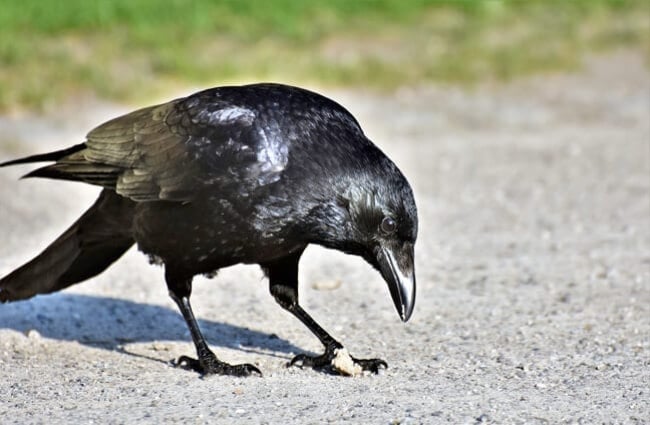
Where the Wild Crows Roam: Habitat and Distribution
Crows are among the most widespread and adaptable bird species on Earth, a true global citizen of the avian world. Their ability to thrive in an astonishing array of environments is a key to their success. From the dense forests of North America to the arid landscapes of Australia, and from the temperate zones of Europe and Asia to the bustling urban centers of nearly every continent, crows have carved out a niche.
Their preferred habitats are incredibly diverse, reflecting their opportunistic nature. They can be found in:
- Forests and Woodlands: Providing ample nesting sites in tall trees and a rich source of food.
- Agricultural Areas: Offering abundant grains, insects, and carrion, though sometimes putting them at odds with farmers.
- Urban and Suburban Environments: Where they exploit human-generated food sources, shelter, and tall structures for roosting and nesting. Parks, gardens, and even busy city streets are common haunts.
- Coastal Regions: Foraging along shorelines for marine invertebrates and washed-up carrion.
For an animal lover hoping to find a crow in the wild, the good news is they are rarely far. Look for them in areas with a mix of tall trees for roosting and open ground for foraging. Parks, agricultural fields, and even your local neighborhood are excellent starting points. Listen for their characteristic “caw-caw” calls, which often betray their presence long before they are seen. Observing them from a respectful distance, perhaps with binoculars, will reveal their intricate behaviors without causing disturbance.
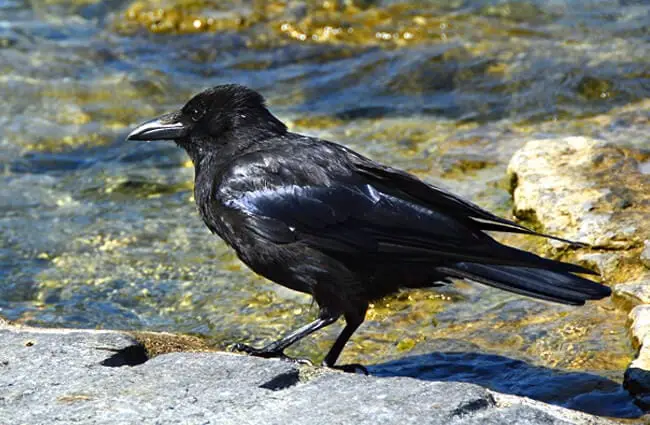
A Peek into the Past: Crow Evolution and Taxonomy
Crows belong to the family Corvidae, a group of passerine birds renowned for their intelligence and complex social structures. This family includes not only crows but also ravens, jays, magpies, and nutcrackers. The evolutionary history of crows is a story of remarkable adaptation and cognitive development, leading to their widespread success.
The Corvidae family is believed to have originated in Australasia, with subsequent radiations across the globe. Crows, specifically the genus Corvus, represent a relatively recent but highly successful branch of this family tree. Their evolution has been characterized by the development of sophisticated problem-solving abilities, advanced communication, and a highly flexible diet, all of which have contributed to their ability to colonize diverse environments and adapt to changing conditions, including human-dominated landscapes. Studying their genetic lineage reveals a fascinating journey of diversification and specialization, highlighting the power of natural selection in shaping intelligent life.
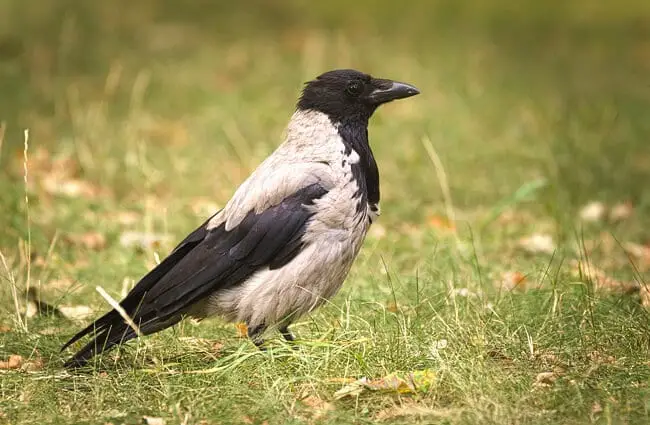
What’s on the Menu? The Crow’s Diverse Diet
Crows are the ultimate opportunists when it comes to food, a trait that underpins their ecological success. They are classic omnivores, meaning their diet consists of both plant and animal matter, and they are not particularly picky. This dietary flexibility allows them to exploit a vast range of food sources available in their varied habitats.
A crow’s diet can include:
- Insects and Invertebrates: Grubs, beetles, worms, spiders, and other arthropods are a staple, especially during breeding season when protein needs are high.
- Small Vertebrates: Rodents, frogs, lizards, and even the eggs and nestlings of other birds can be prey.
- Carrion: Crows are important scavengers, cleaning up dead animals from roadsides and fields, playing a vital role in ecosystem hygiene.
- Fruits and Berries: A wide variety of wild and cultivated fruits, including cherries, berries, and apples.
- Grains and Seeds: Corn, wheat, sunflower seeds, and other agricultural crops.
- Nuts: They are adept at cracking open nuts, sometimes dropping them from a height onto hard surfaces or even placing them in front of moving cars to be cracked open.
- Human Food Scraps: In urban areas, they readily consume discarded food items from trash cans, picnic areas, and outdoor eateries.
Their foraging strategies are as diverse as their diet. Crows will walk along the ground, probe with their bills, turn over leaves, and even raid bird feeders. Their intelligence is often on display during foraging, as they learn to exploit new food sources and overcome obstacles to access food. This adaptability makes them formidable survivors in almost any environment.

Love and Little Ones: Crow Mating and Reproduction
The reproductive cycle of crows is a fascinating display of pair bonding, cooperative breeding, and dedicated parental care. Crows are generally monogamous, forming strong pair bonds that can last for many years, often for life. Courtship rituals can involve aerial displays, mutual preening, and food offerings.
The breeding season typically occurs in spring, though it can vary by region. Nests are usually large, bulky structures built high in trees, often in a fork or near the trunk for stability. Both sexes participate in nest construction, using a variety of materials:
- Twigs and branches as the primary framework.
- Mud, grass, hair, and even human-made materials like string or cloth for lining and insulation.
A clutch typically consists of 3 to 6 eggs, which are usually pale blue-green with brown speckles. The female primarily incubates the eggs for about 18 to 20 days, while the male brings her food. Once the chicks hatch, both parents are involved in feeding them. Crow chicks are altricial, meaning they are born helpless, blind, and featherless, requiring intensive parental care.
A remarkable aspect of crow reproduction is cooperative breeding. Young crows from previous broods, known as “helpers,” often remain with their parents for several years and assist in raising subsequent broods. These helpers contribute to feeding the nestlings, defending the territory, and mobbing predators. This cooperative strategy significantly increases the survival rate of the young and strengthens the family unit, showcasing the deep social bonds within crow communities.
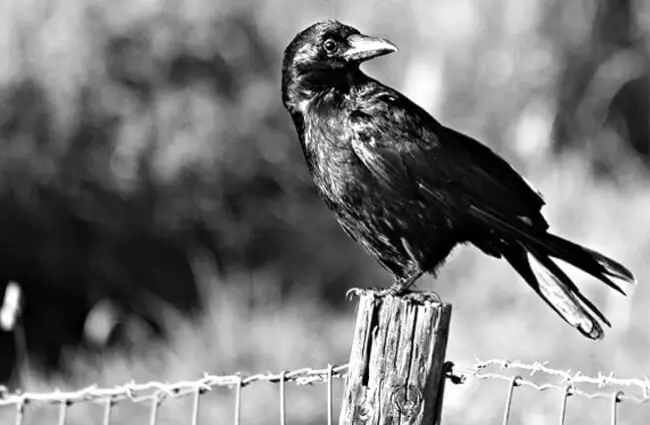
Nature’s Janitors and Gardeners: Crows in the Ecosystem
Crows play a multifaceted and often underappreciated role in their ecosystems, acting as both scavengers and active participants in various ecological processes. Their contributions are vital for maintaining environmental balance.
- Scavenging and Waste Management: As opportunistic feeders, crows are highly efficient scavengers. They consume carrion, discarded food, and agricultural waste, effectively cleaning up the environment and preventing the spread of disease. This “janitorial” service is crucial, especially in human-dominated landscapes.
- Pest Control: Crows consume vast quantities of insects, grubs, and rodents, acting as natural pest controllers in agricultural fields and gardens. While they may sometimes raid crops, their overall impact on pest populations is often beneficial.
- Seed Dispersal: By consuming fruits and berries and then dispersing the seeds through their droppings, crows contribute to plant propagation and forest regeneration. They can carry seeds over long distances, aiding in the colonization of new areas.
- Predator and Prey Dynamics: Crows are both predators and prey. They prey on the eggs and nestlings of other birds, small mammals, and insects. Conversely, they are preyed upon by larger raptors like hawks and owls, as well as mammalian predators. Their presence can influence the behavior and distribution of other species.
- Interspecies Interactions: Crows are known for their “mobbing” behavior, where a group of crows will aggressively harass a larger predator, such as a hawk, owl, or even a cat, to drive it away from their territory or nests. This behavior can inadvertently protect other smaller bird species in the vicinity. They also engage in complex interactions with other corvids and various bird species, sometimes competing for resources, other times coexisting.
Understanding these interactions highlights the crow’s integral position within the food web and its significant ecological footprint.
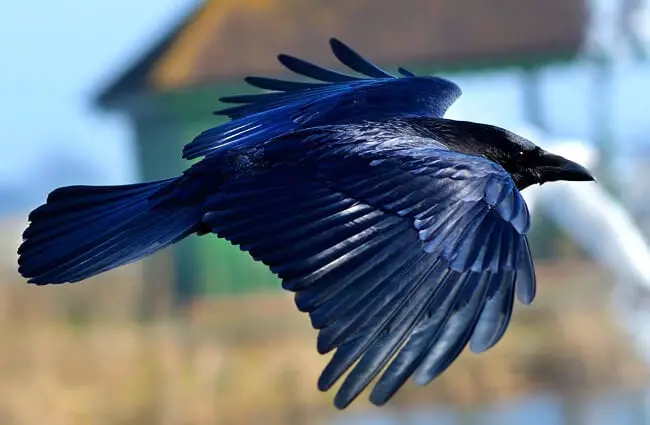
Crows and Us: A Shared History and Complex Relationship
The relationship between humans and crows is ancient and deeply woven into the fabric of human culture, often reflecting our own complex feelings about nature. Crows have been both revered and reviled, seen as symbols of wisdom, prophecy, and even death.
- Cultural Contributions:
- Folklore and Mythology: In many indigenous cultures, particularly in North America, the crow is a powerful trickster figure, a creator, or a bringer of light and knowledge. In Norse mythology, Odin had two ravens, Huginn and Muninn (Thought and Memory), who flew around the world and brought him information.
- Symbolism: Crows are often associated with mystery, intelligence, transformation, and the spiritual realm. Their black plumage has led to associations with death and the unknown in some Western cultures, yet in others, they symbolize good fortune or protection.
- Art and Literature: Crows frequently appear in literature, poetry, and art, often as enigmatic figures or harbingers of events, reflecting their profound impact on the human psyche.
- Interaction with Humans:
- Urban Adaptation: Crows are masters of urban living. They have learned to exploit human infrastructure for shelter, food, and even transportation (e.g., dropping nuts on roads). Their ability to thrive in close proximity to humans is a testament to their adaptability and intelligence.
- Problem-Solving and Recognition: Crows are known to recognize individual human faces and remember them, sometimes for years. They can distinguish between friendly and threatening individuals. There are documented cases of crows bringing “gifts” like shiny objects to humans who have consistently fed them, suggesting a form of reciprocal interaction.
- Conflict and Coexistence: While often tolerated, crows can sometimes be perceived as pests, especially when they raid crops, scavenge from trash, or gather in large, noisy roosts. However, many people appreciate their intelligence and presence, finding joy in observing their complex behaviors.
Our ongoing interaction with crows offers a unique window into animal cognition and the intricate ways in which species adapt to a human-dominated world.
Beyond the Myths: Fascinating Facts About Crows
The intelligence of crows is not merely anecdotal; it is backed by extensive scientific research, revealing a suite of cognitive abilities that place them among the smartest animals on the planet.
- Tool Use and Manufacturing: Crows are one of the few non-human animals known to use tools, and even more remarkably, to manufacture them. New Caledonian crows, for example, fashion hooks from twigs and leaves to extract insects from crevices.
- Problem-Solving: They can solve complex multi-step puzzles to obtain food, demonstrating foresight and planning. Experiments have shown them understanding cause and effect, even when the solution is not immediately obvious.
- Memory and Facial Recognition: Crows possess an extraordinary memory. They can remember specific locations for food caches and, as mentioned, recognize individual human faces. This memory extends to remembering negative interactions and communicating this information to other crows.
- Social Structure and Communication: Crows live in complex social groups, often forming large communal roosts. Their vocalizations are highly varied and sophisticated, conveying different meanings, from alarm calls to calls that rally the group for mobbing. They also use body language to communicate.
- Mimicry: While not as renowned as parrots, some crows can mimic a variety of sounds, including human speech, other animal calls, and artificial noises. This ability further highlights their cognitive flexibility.
- Play Behavior: Crows engage in play, even as adults, which is often a sign of advanced intelligence. They have been observed sliding down snowy roofs, playing “keep away” with objects, and engaging in aerial acrobatics.
- Understanding Physics: Studies suggest crows have a basic understanding of water displacement. They have been observed dropping stones into a container of water to raise the water level and access a floating treat.
Practical Insights for Crow Enthusiasts
For the Aspiring Zoologist
Crows offer a rich field for study. Aspiring zoologists should focus on behavioral ecology, cognitive science, and urban ecology. Key areas for research include:
- Social Dynamics: Observe flock structures, communication patterns, and cooperative breeding behaviors. How do different calls correlate with specific actions or threats?
- Cognition: Design experiments to test problem-solving, memory, and tool-use capabilities in wild or semi-wild populations.
- Urban Adaptation: Study how crows adapt to human infrastructure, exploit novel food sources, and navigate anthropogenic landscapes. What are the long-term impacts of urbanization on crow populations?
- Dietary Analysis: Conduct detailed studies of their diet across different seasons and habitats to understand their ecological role as scavengers and predators.
Field observation, ethograms, and careful experimental design are crucial. Remember that crows are highly intelligent and can learn from your presence, so minimize disturbance and maintain ethical research practices.
For the Hiker: Encountering Crows in the Wild
Encountering crows in the wild is a common and rewarding experience. Here’s what to do:
- Observe from a Distance: Crows are naturally curious but can be wary. Use binoculars to get a closer look without disturbing their natural behavior.
- Listen to Their Calls: Pay attention to their vocalizations. A series of sharp “caws” might indicate an alarm, while softer calls could be communication within the family. Learning their calls can enhance your understanding of their activities.
- Respect Their Space: Avoid approaching nests or fledglings. If a crow seems agitated or starts mobbing, you are likely too close to something they perceive as a threat.
- Do Not Feed Wild Crows: While tempting, feeding wild animals can alter their natural foraging behaviors and make them dependent on human handouts. It can also lead to conflicts.
- Appreciate Their Intelligence: Watch for signs of problem-solving, tool use, or social interactions. You might witness something truly remarkable.
For the Zookeeper: Caring for Crows in Captivity
Caring for crows in captivity requires a deep understanding of their intelligence, social needs, and natural behaviors to ensure their welfare. Key tasks and considerations include:
- Enclosure Design:
- Spaciousness: Crows need large enclosures that allow for flight and exploration.
- Perching: Provide varied perches at different heights and diameters to exercise their feet and legs. Natural branches are ideal.
- Substrate: A natural substrate like soil, sand, or wood chips encourages natural foraging behaviors.
- Shelter: Offer sheltered areas from weather extremes and private spaces for rest.
- Diet:
- Omnivorous Diet: Mimic their wild diet with a balanced mix of high-quality bird pellets, fresh fruits and vegetables, insects (mealworms, crickets), small amounts of cooked meat, and occasional carrion (e.g., thawed rodents).
- Foraging Enrichment: Scatter food, hide it in puzzle feeders, or offer whole items that require effort to open (e.g., nuts in shells) to stimulate natural foraging.
- Enrichment:
- Cognitive Stimulation: Crows require significant mental stimulation. Provide puzzle toys, novel objects, branches with bark to strip, and opportunities for manipulation. Rotate enrichment items regularly.
- Social Interaction: Crows are highly social. If possible and appropriate for the species, house them in pairs or small family groups. If housed individually, ensure regular human interaction and opportunities for visual or auditory contact with other birds.
- Bathing Opportunities: Provide shallow water dishes or misters for bathing, which is crucial for feather health.
- Avoidances:
- Isolation: Prolonged isolation can lead to stress and behavioral issues.
- Lack of Stimulation: A barren enclosure with no enrichment will result in boredom, feather plucking, and other stereotypic behaviors.
- Inappropriate Diet: An unbalanced diet can lead to nutritional deficiencies and health problems. Avoid excessive processed human foods.
- Loud Noises/Sudden Movements: While intelligent, crows can be sensitive to sudden disturbances. Maintain a calm and predictable environment.
- Health Monitoring: Regular veterinary checks, observation for signs of illness, and maintaining a clean environment are paramount.
Conclusion: The Enduring Legacy of the Crow
From their intricate social structures and remarkable intelligence to their vital role as ecosystem engineers, crows are truly extraordinary creatures. They challenge our perceptions of avian capabilities and offer a constant source of wonder for anyone willing to observe them closely. Whether you are a student researching their complex lives, an animal lover seeking them in the wild, an aspiring zoologist delving into their cognition, a hiker appreciating their calls, or a zookeeper ensuring their welfare, the crow provides endless opportunities for learning and connection. Their enduring presence in our world, adapting and thriving alongside humanity, serves as a powerful reminder of nature’s resilience and the boundless capacity for intelligence in the animal kingdom. The next time you see a crow, take a moment to appreciate the genius behind those glossy black feathers.

![Red Angus Closeup of a beautiful Red Angus cowPhoto by: U.S. Department of Agriculture [pubic domain]https://creativecommons.org/licenses/by/2.0/](https://animals.net/wp-content/uploads/2020/03/Red-Angus-4-238x178.jpg)




![Red Angus Closeup of a beautiful Red Angus cowPhoto by: U.S. Department of Agriculture [pubic domain]https://creativecommons.org/licenses/by/2.0/](https://animals.net/wp-content/uploads/2020/03/Red-Angus-4-100x75.jpg)

